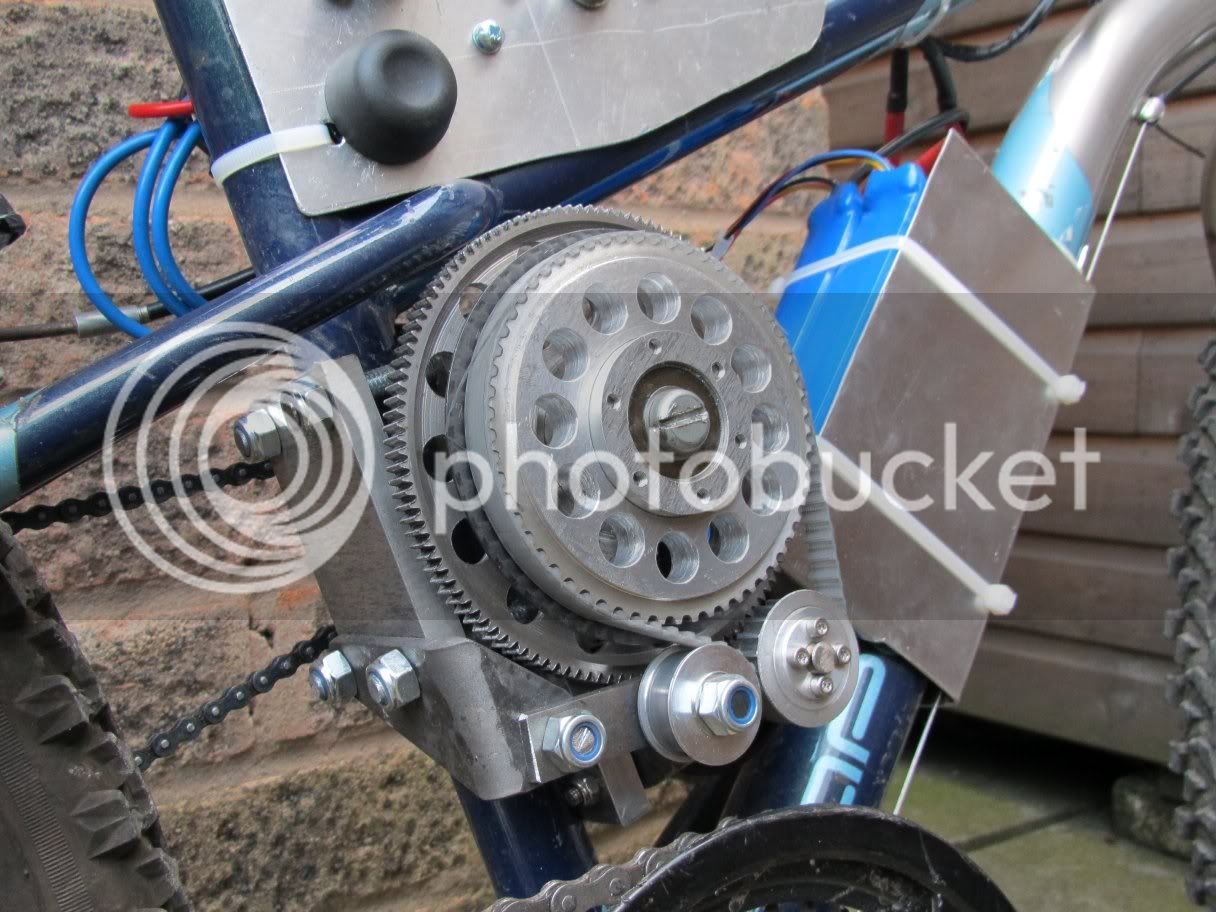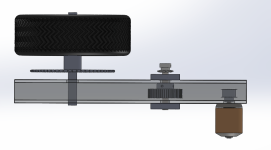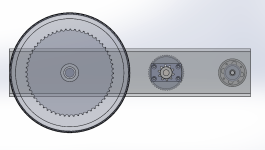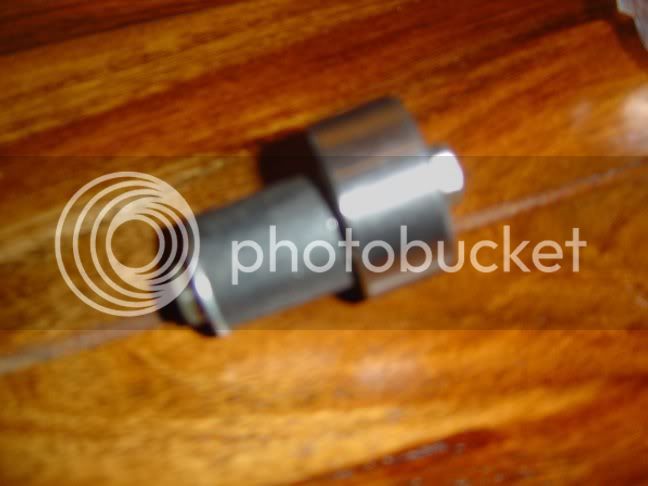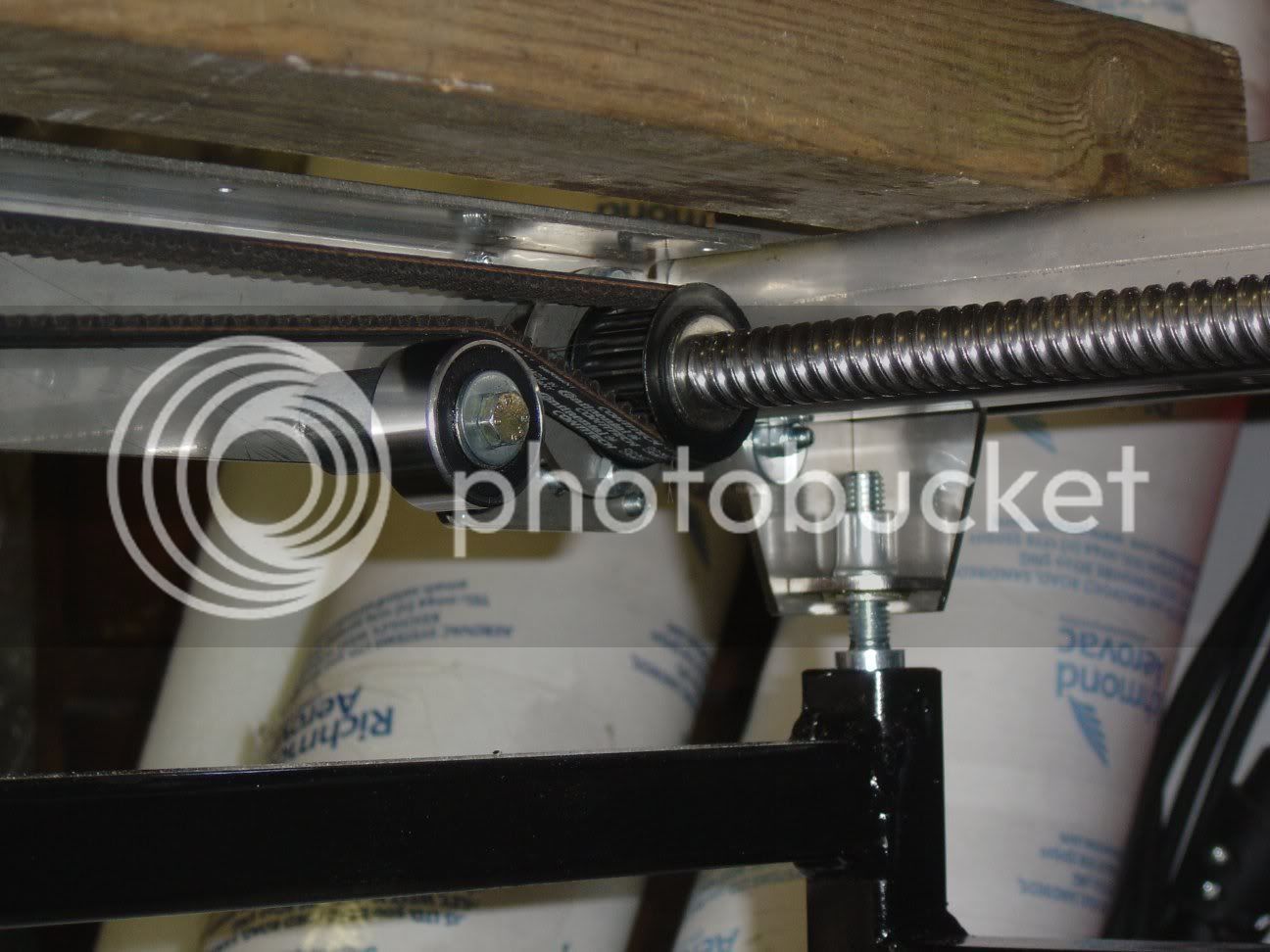Hi all, I've been lurking a while and posting intermittently as I work on power wheelchairs for a sport called power soccer. For various reasons I'm trying come up with a better motor than the NPC T74, and due to recent developments I am becoming comfortable with the idea of moving away from standard mobility controllers to something like a Roboteq Brushless controller at a voltage higher than our usual 24 volts.
What I'd like to ask the many experienced folks here is if anybody can comment on the idea of using a Turnigy SK3 6374 168kv (with external hall sensors, obviously) and a two stage reduction with a 15mm GT2 timing belt as the first stage, and a #35 chain as the second stage. I'd use a 15mm wide belt, and provide tensioning ability for both the belt and the chain independently.
Here is the trouble- It seems that timing belts are really complicated, because I've been all over the Gates website, and I haven't found a good reference on figuring out exactly whether or not this size of belt is strong enough for my load. I also called the sales rep and asked for assistance. He took all of my information, promised to get back to me and then never did. I work as an engineer during the day and this is just a side hobby for me- I've rarely had such trouble with a supplier! I've also never had occasion to use one of these belts before, so I just don't even have a "gut" feel for it- that's why I'm asking here.
Anyway, the plan is to mount the motor on a standoff and use a coupling to attach the shaft to a supported 15 groove GT2 sprocket, which would drive a 50-ish tooth sprocket with a 15mm wide belt. The large belt sprocket would be on a jack shaft driving a small #35 chain sprocket which would drive this 60 tooth sprocket wheel combo for whatever ratio gives a top speed between 7 and 9 mph. It looks like 16:1 at 24V is OK, and 20:1 at 36V is not bad. From a design flexibility perspective it looks like I can experiment a lot with changing the ratio between the chain sprockets and adding and removing chain to get the right length.
I'd expect to take the Turnigy SK3 6374 up to 6,000 RPM at 36 volts, and feed it no more than 75 amps. At 16:1 I'd see a thrust of about 120 pounds, and at 20:1 it could be pushing 150.
Sorry if this was the most roundabout possible way of asking this, but the TL;DR is- does anybody have experience or reference materials to tell me if a 15mm wide 5mm GT2 belt survive 6,000 RPM and 37 ft-lb input on a 15 groove sprocket while driving a 50 groove sprocket?
Thanks!
What I'd like to ask the many experienced folks here is if anybody can comment on the idea of using a Turnigy SK3 6374 168kv (with external hall sensors, obviously) and a two stage reduction with a 15mm GT2 timing belt as the first stage, and a #35 chain as the second stage. I'd use a 15mm wide belt, and provide tensioning ability for both the belt and the chain independently.
Here is the trouble- It seems that timing belts are really complicated, because I've been all over the Gates website, and I haven't found a good reference on figuring out exactly whether or not this size of belt is strong enough for my load. I also called the sales rep and asked for assistance. He took all of my information, promised to get back to me and then never did. I work as an engineer during the day and this is just a side hobby for me- I've rarely had such trouble with a supplier! I've also never had occasion to use one of these belts before, so I just don't even have a "gut" feel for it- that's why I'm asking here.
Anyway, the plan is to mount the motor on a standoff and use a coupling to attach the shaft to a supported 15 groove GT2 sprocket, which would drive a 50-ish tooth sprocket with a 15mm wide belt. The large belt sprocket would be on a jack shaft driving a small #35 chain sprocket which would drive this 60 tooth sprocket wheel combo for whatever ratio gives a top speed between 7 and 9 mph. It looks like 16:1 at 24V is OK, and 20:1 at 36V is not bad. From a design flexibility perspective it looks like I can experiment a lot with changing the ratio between the chain sprockets and adding and removing chain to get the right length.
I'd expect to take the Turnigy SK3 6374 up to 6,000 RPM at 36 volts, and feed it no more than 75 amps. At 16:1 I'd see a thrust of about 120 pounds, and at 20:1 it could be pushing 150.
Sorry if this was the most roundabout possible way of asking this, but the TL;DR is- does anybody have experience or reference materials to tell me if a 15mm wide 5mm GT2 belt survive 6,000 RPM and 37 ft-lb input on a 15 groove sprocket while driving a 50 groove sprocket?
Thanks!


